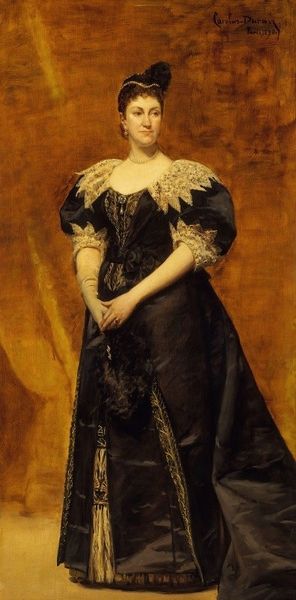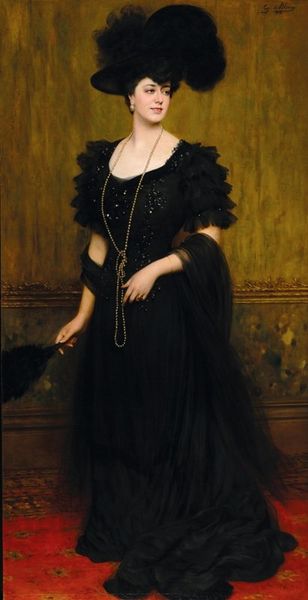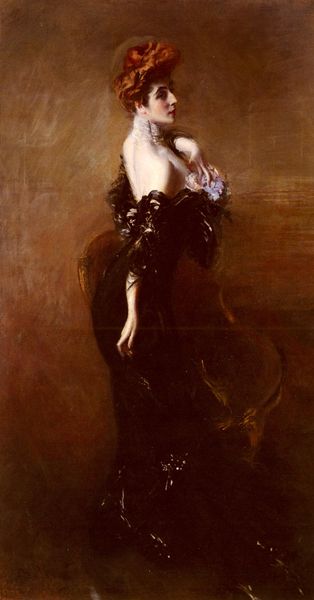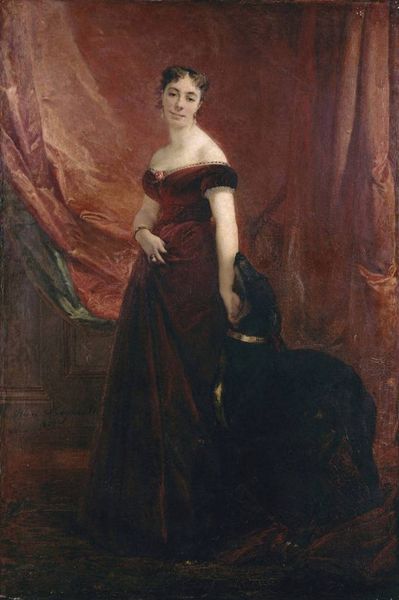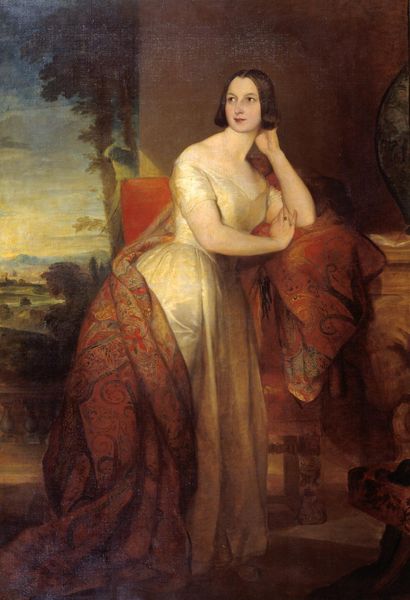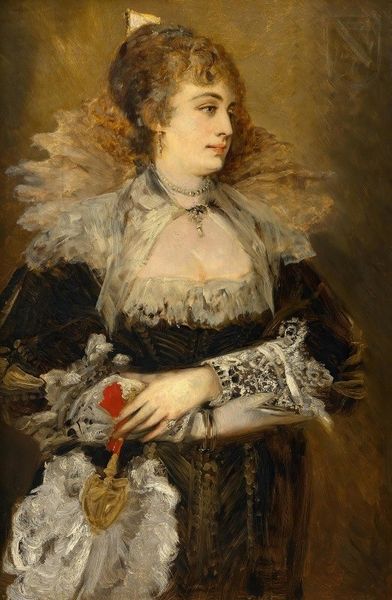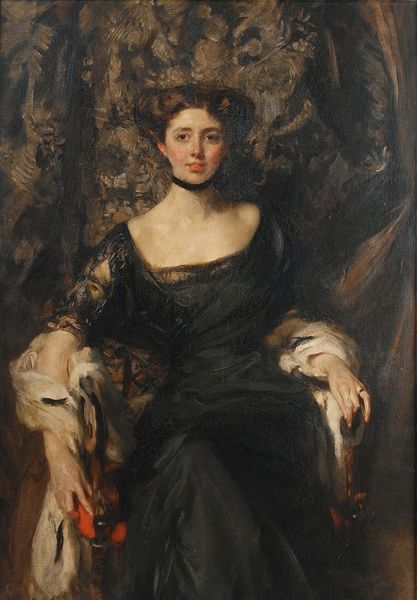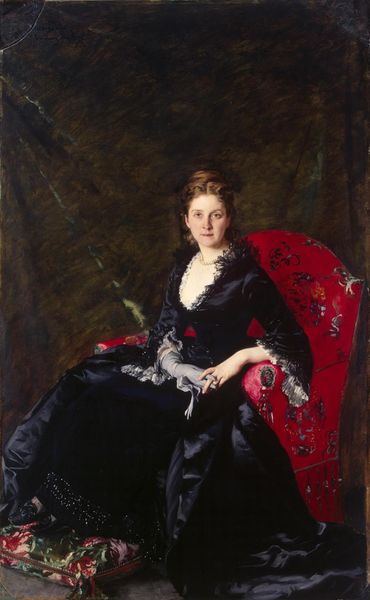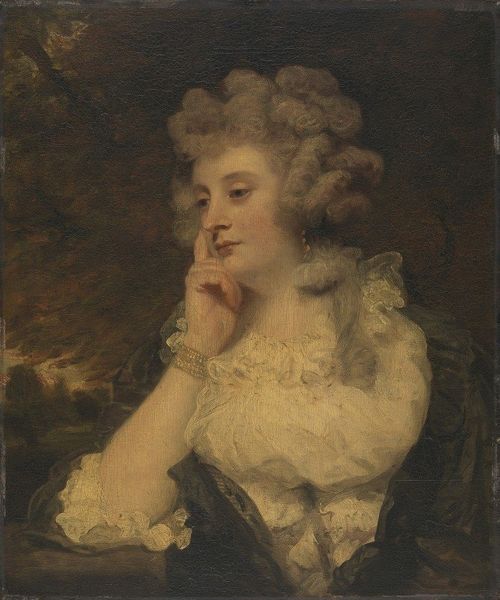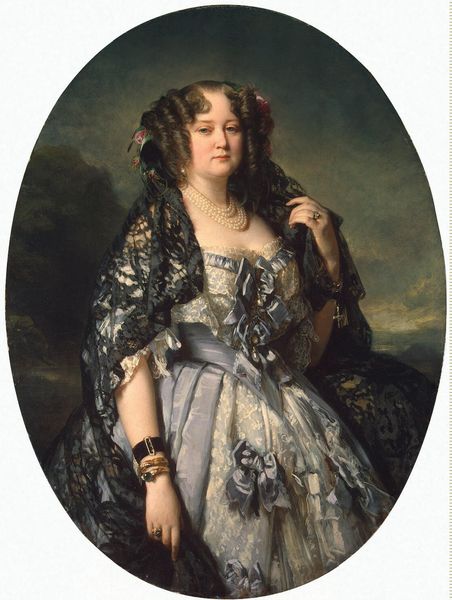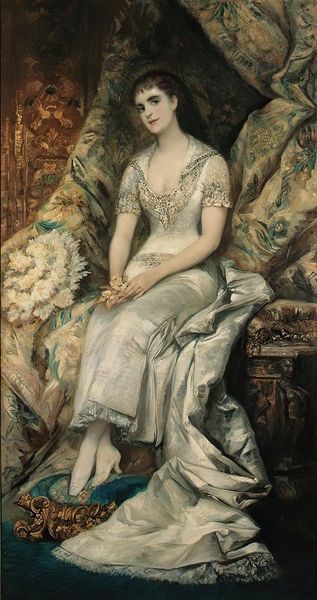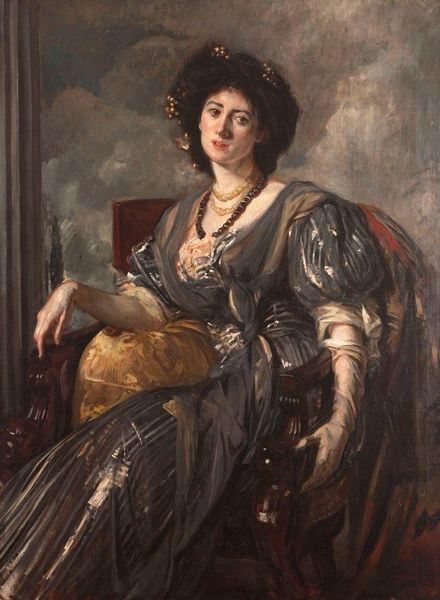
Copyright: Public Domain: Artvee
Curator: This is Georges Jules Victor Clairin's "Portrait de Gabrielle Krauss," an oil painting completed in 1883. The subject sits regally in an ornate chair. What strikes you upon seeing it? Editor: Immediately, the colour. The dominance of black lends it an air of solemnity and perhaps even mourning, like a stage set for a tragic opera. The gold embellishments on the chair create such contrast and focus the viewer to search for where else they may be. Curator: Yes, the black is remarkable. Black dye was more affordable, shifting perceptions of black as the colour for both grief and understated fashion, which impacted dress codes and notions of elegance. I think the painting does convey a certain sense of stagecraft, given that Gabrielle Krauss was indeed a celebrated opera singer of the time. Editor: And look at how her dark veil contrasts against the paler tones of her face and chest, an echo of the masks and concealing garments used in Greek theatre. It almost invites the audience to guess at the character she’s portraying. Is she a grieving widow or an enigmatic seductress? There is this constant reference to theatre through iconography. Curator: Fascinating to view the opera reflected so. She embodies conflicting power dynamics here. Despite her apparent wealth and status, she remains constrained by societal expectations of femininity and artistic expression, performing for a largely male audience. We must question her ability to make free choices. Editor: Exactly. There are all these symbolic oppositions between concealing garments and ornamentation of chair and subject. But this tension is where the richness lies. Do you agree with such notions, Curator? Curator: Indeed, there is something unresolved about the gaze, suggesting a deeper, more complex identity beyond mere ornamentation. The pose appears so still and contained. Editor: In short, the darkness makes it, doesn’t it? What is your takeaway from this remarkable artwork? Curator: It reveals the complex interplay between social expectation, artistic ambition, and feminine representation in the late 19th century. What's yours? Editor: Simply put, I see a story waiting to be sung. The symbols speak louder than the person.
Comments
No comments
Be the first to comment and join the conversation on the ultimate creative platform.
